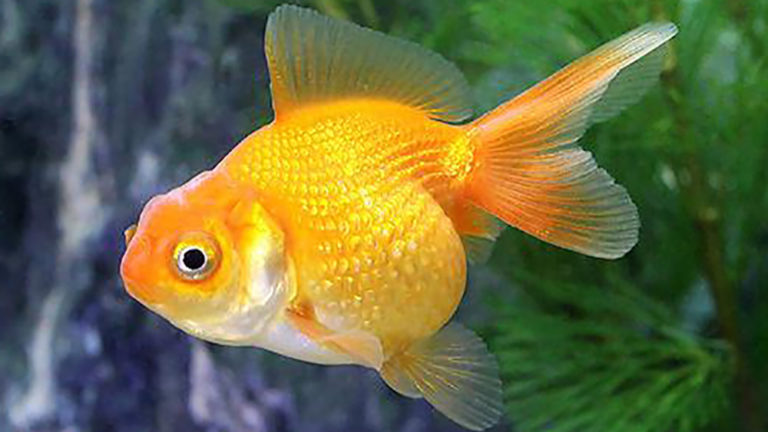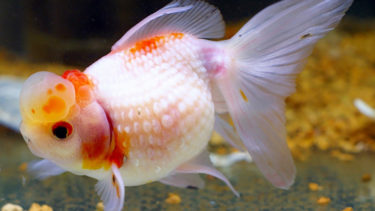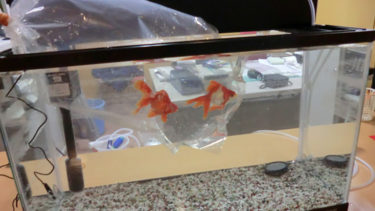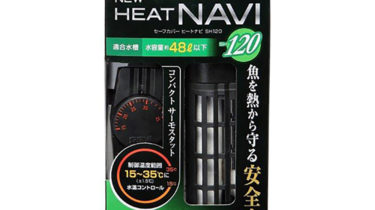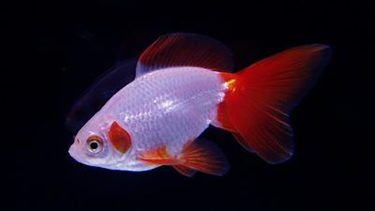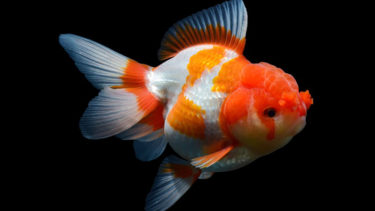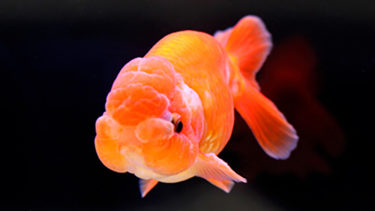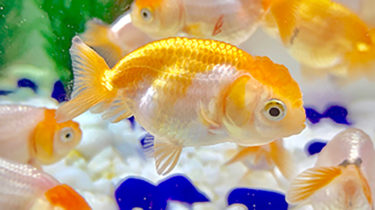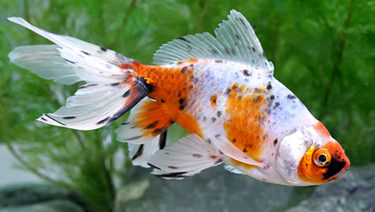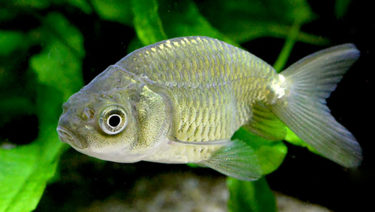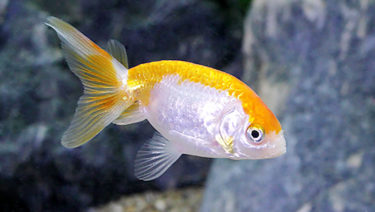Hama Nishiki is a fixed goldfish with a blister-shaped head mass from the Takagashira Pearl. The sides of the body have pearls inherited from the Takagashira Pearl, and the head is characterized by a blister-shaped fleshy mass that is divided into two parts. In this article, I would like to explain in detail the characteristics of the Hama Nishiki and how to keep it.
What is Hamanishiki?
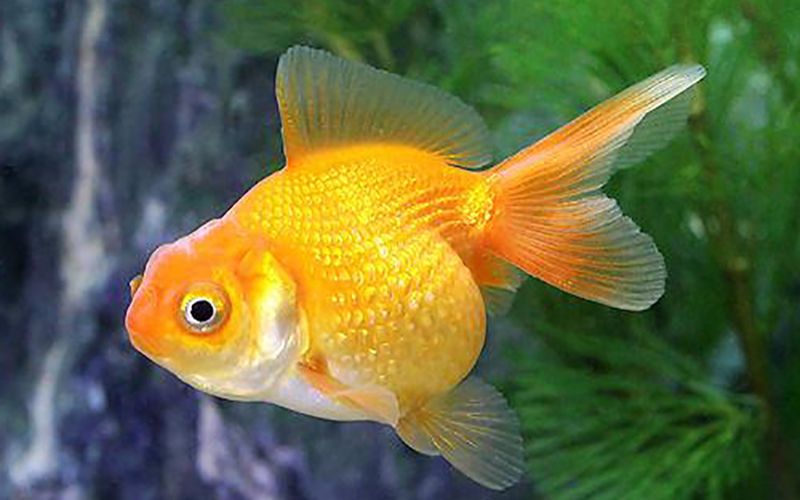
The Hama Nishiki is a fixed goldfish with a blister-shaped head mass from the Takagashira Pearl. The characteristics are that the sides of the body have pearls inherited from the Takagashira Pearl, and the head has a blister-shaped varicose mass that is divided into two parts.The blister-like mass of flesh on the head is nicknamed "crown pearlescale" in some foreign countries because it looks like a crown, etc.
The Pearlescent Scale is a goldfish with pearly white scales. In addition to its pearly scales, the Pearlescent Scale is a goldfish with many other cute features that allow it to be enjoyed in a variety of ways. In this article, I would like to explain in detail the characteristics of the Pearlescent Scale and how to keep it. What is pearlescale [...].
The pearl scale with well-developed fleshy mass of the high-headed pearl has the fleshy mass seen in Dutch-type goldfish on its head and the scales on its body have beautiful pearly scales. In this article, I would like to explain in detail the characteristics of the Takagashira Pearl and how to keep it. What is a Takagashira Pearl [...].
The aquilepus is a goldfish that has a dorsal finless feature found in the Ranchu lineage, and has a blister-like pouch on the lower part of the eye (around the cheek), which causes the black eye, which is usually attached horizontally, to point upward. This time, I would like to explain in detail the characteristics of the blister eye and how to keep it. [...].
Origin of Hamanishiki
Hamanishiki was first improved around 1960 by Tetsuji Shimizu, who lives in Hamamatsu City, Shizuoka Prefecture, and was fixed and announced in 1978.The goldfish was named "Hamanishiki" because it was born in Hamamatsu City, where Mr. Shimizu lived. Despite being a Japanese-born breed, the Chinese variety is more widely distributed than the domestic variety.
Many people think that goldfish are the goldfish that you see at fairs and festivals in the summer, and that there are many different kinds of goldfish. And it is no exaggeration to say that each type of goldfish has its own characteristics, and that is the best part about goldfish [...]
How to enjoy Hamanishiki

The best way to enjoy the Hama Nishiki is to look at its head, which is different from other goldfish in that it has two separate blisters of flesh, and the pearls on the sides of its body. For maximum enjoyment of this combination, we recommend viewing it from the side (side view) in an aquarium rather than from the top (top view) in a bowl or other container.When viewed from the side, the pearls on the sides of the body show various expressions in shadows and other forms when light hits them. Furthermore, by looking at it from the front, you can enjoy the characteristic two-parted fleshy mass. If you want to see the two separate fleshy bumps on the head, we recommend viewing it from the top. If you would like to see the head's two distinct nuchal masses, I recommend that you view it from the top, which is difficult to see from the side. If you have enjoyed the side view, please enjoy the upper view as well.
Points to keep in mind when mixing swimmers
When mixing goldfish with other goldfish and other species, there is sometimes uncertainty as to what species is good and what species is not. First,There is no general prohibition against this or that when mixing goldfish with other species.Therefore, depending on the personality and environment of the goldfish you keep, even species that are said to be bad for each other may get along well with each other. However, there is also the matter of compatibility between goldfish. If you put incompatible goldfish together, there is a high possibility that they will fight or that only one of them will monopolize the food. However, as explained in the beginning, there is no prohibition for goldfish, so if you want to mix them, it may be OK to do so. Now, let us explain which goldfish are compatible with Japanese goldfish and which are not.
Compatible goldfish
Goldfish that are most compatible with Hama Nishiki are Ranchu-type goldfish such as Ranchu and Edonishiki.Since Hamanishiki is not a very good swimmer, we recommend placing it with a Ranchu type goldfish, a breed that is often not a good swimmer as well, so that Hamanishiki will be less likely to be chased and hurt.
About Ranchu
About Edo Nishiki
About Ranchu Type
Incompatible goldfish
Goldfish that are incompatible with Hama Nishiki are Japanese goldfish, such as Wakin (Japanese goldfish) and Comet (Japanese goldfish).Many Japanese goldfish are agile and grow large in a short period of time. If you mix them with other Japanese goldfish, be aware that they may be eaten by other Japanese goldfish, and the difference in body size may cause them to separate from each other. Also, if you are mixing with Japanese goldfish, you should always watch for Japanese goldfish chasing and messing with the Hamanishiki, as they may mess with the pearl, which is a characteristic of the Hamanishiki, and cause the pearl to come off.
About WAKIN
About Comet
About Us
Points to keep in mind when keeping Hamanishiki
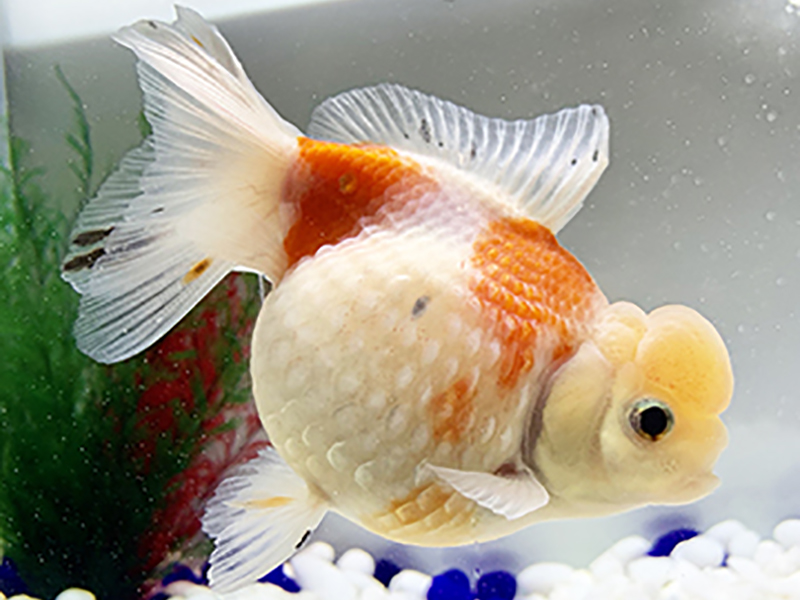
The Hama Nishiki tends to draw the eye to the two blister-like fleshy masses on its head, but it is a pearlescent goldfish, the same as the Pearl Scale, and has distinctive uneven scales caused by a peculiar calcareous substance adhering to the top of its scales.These scales and the characteristic flesh mass give the Hama Nishiki a unique presence not found in other goldfish. Originally, the Hama Nishiki was created from the Takagashira Pearl, but as the popularity of the Hama Nishiki has gradually increased in recent years, imports from China and other countries have also increased. However, as the popularity of Hama Nishiki has gradually increased in recent years, imports from China and other countries have also been on the rise. It seems that by crossbreeding with the Paph. suibagome, the pore size becomes larger and more beautiful. However, it seems that they are also recognized as Hama Nishiki at present. If you really want a domestic Hama Nishiki, please consult a specialty store.

